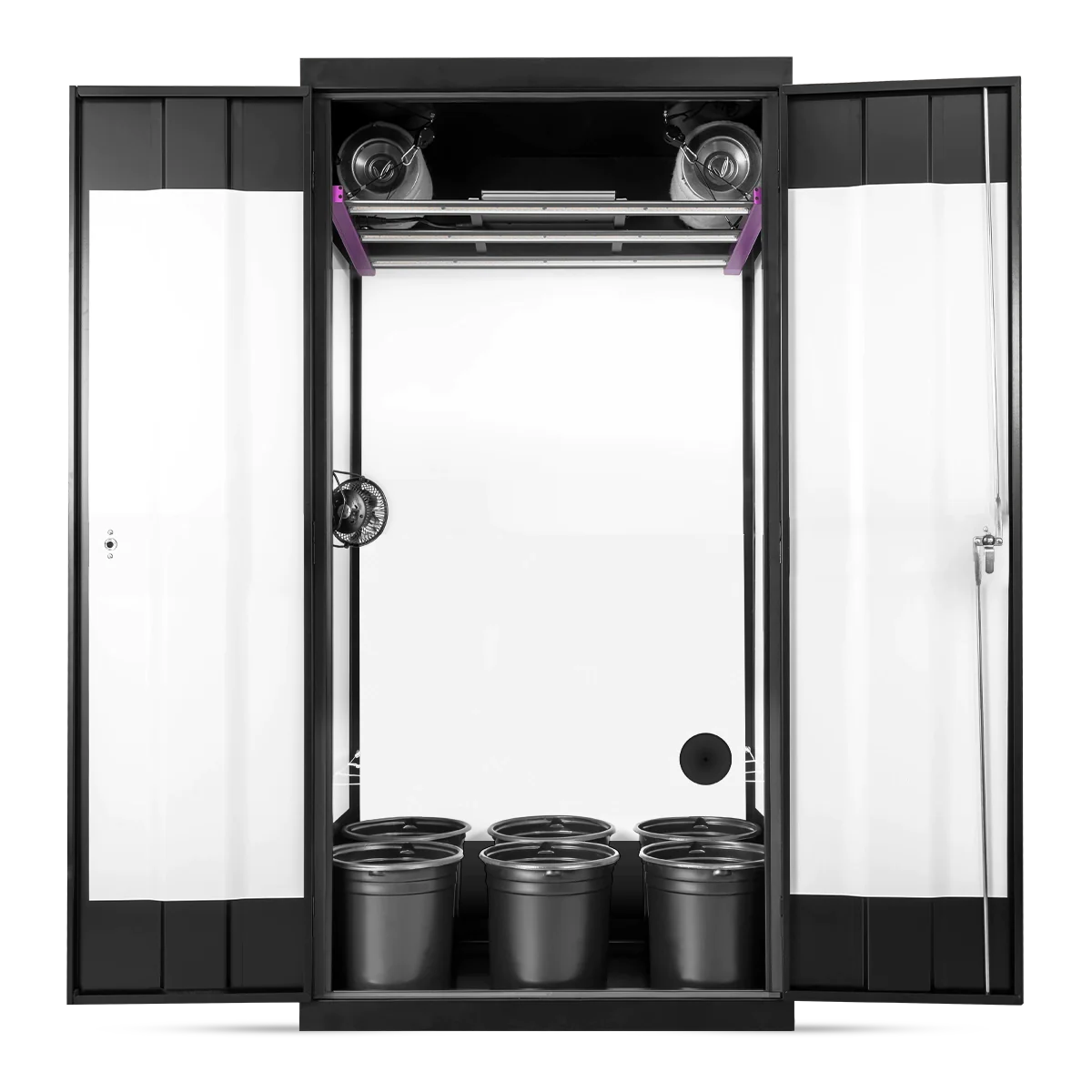
Grow Box Kits: Convenient Solutions for Indoor Gardening Success
Unlocking the Green Thumb: A Beginner's Guide to Grow Box Kits
In recent years, growing your plants and herbs has gained immense popularity. Whether you're a seasoned gardener or a complete novice, the concept of a grow box kit offers an exciting and convenient way to nurture your green oasis.
In this article, we'll delve into the world of grow box kits, exploring what they are, how they work, and why they are a fantastic choice for beginners and experienced gardeners.
What Is a Grow Box Kit?
Before we dive deeper into the topic, let's start with the basics. A grow box kit is a self-contained, all-in-one system designed for indoor gardening. These kits are carefully engineered to provide the ideal conditions for plant growth, making them an excellent choice for those with limited outdoor space or adverse weather conditions. They come in various sizes, catering to different types of plants and individual needs.
Key Components of a Grow Box Kit
Lighting: Most grow box kits have built-in LED or fluorescent lighting systems that mimic natural sunlight. These lights are essential for photosynthesis and ensuring your plants receive the right light.
Ventilation: Proper airflow is crucial for preventing mold and maintaining healthy plants. Grow box kits typically include fans and ventilation systems to regulate temperature and humidity.
Hydroponics or Soil: Depending on the kit, you can choose between traditional soil-based systems or hydroponics, which involves growing plants in nutrient-rich water.
Climate Control: Advanced kits may have climate control features like temperature and humidity sensors, allowing you to create the perfect environment for your plants.
Why Choose a Grow Box Kit?
Space Efficiency: Grow box kits are perfect for urban dwellers or those with limited outdoor space. They can fit in a corner of your apartment, balcony, or closet.
Year-Round Gardening: With a grow box kit, you can grow plants year-round, unaffected by weather conditions, allowing you to enjoy fresh herbs and veggies anytime.
Beginner-Friendly: These kits are designed for beginners, making it easy for anyone to start their gardening journey without a steep learning curve.
Optimal Growing Conditions: Grow box kits offer precise control over light, temperature, and humidity, creating an ideal environment for plant growth.
Choosing the Right Grow Box Kit
When selecting a grow box kit, consider the following factors:
Plant Type: Different kits are designed for various plants. Ensure the kit you choose matches your intended plant selection.
Space Availability: Measure the space where you plan to install the kit to ensure it fits comfortably.
Budget: Grow box kits come in a range of prices. Determine your budget and find a kit that meets your requirements.
Features: Review the kit's features, such as lighting, ventilation, and automation options, to find one that suits your needs.
Setting Up Your Grow Box Kit
Once you've chosen the right kit, follow these steps to set it up:
Assemble the kit according to the manufacturer's instructions.
Choose the plants you want to grow and plant them in the provided containers or hydroponic system.
Set up the lighting and ventilation systems.
Monitor and maintain the kit regularly, adjusting settings as needed.
Maintenance and Care
To ensure your grow box kit garden thrives, proper maintenance and care are essential:
Watering: Monitor your plants' water needs closely. Hydroponic systems typically require less water than traditional soil-based ones. Avoid overwatering, which can lead to root rot.
Nutrients: Regularly replenish the nutrient solution per the kit's instructions for hydroponic systems. Soil-based kits may require occasional fertilization.
Pruning and Training: As your plants grow, prune them to encourage bushier growth and remove dead or diseased leaves. Consider training techniques to optimize space and light exposure.
Pest and Disease Management: Keep an eye out for pests and diseases. Act promptly to prevent infestations, using organic or chemical treatments as necessary.
Lighting and Timing: Adjust the lighting schedule to mimic natural daylight patterns. Most plants need 12-16 hours of light per day. Invest in a timer for consistency.
Common Plants to Grow in Grow Box Kits
Herbs: Basil, mint, rosemary, and cilantro are popular herbs cultivated in grow box kits. They thrive in controlled environments.
Leafy Greens: Lettuce, kale, spinach, and arugula can be easily grown, providing a constant supply of fresh greens.
Tomatoes: Many kits are suitable for growing small tomato varieties. Enjoy fresh cherry or grape tomatoes right from your indoor garden.
Peppers: Bell or hot chili peppers can flourish in a well-maintained grow box kit.
Microgreens: These nutrient-dense, miniature greens are easy to grow and add flavor to your dishes.
Tips for Success
Start Small: If you're new to gardening, begin with a few easy-to-grow plants and gradually expand your collection as you gain experience.
Keep Records: Maintain a gardening journal to track your plant's progress, including growth rates, watering schedules, and any issues you encounter.
Experiment: Feel free to experiment with different plant varieties and growing techniques to discover what works best.
Harvest Carefully: Harvest your crops when they reach maturity, and do so carefully to avoid damaging the plant. This encourages continuous growth.
Stay Informed: Join online gardening communities or forums to exchange tips and advice with fellow growers. Stay updated on the latest innovations in grow box kits.
Troubleshooting Common Issues
Even with the best intentions and care, you might encounter some common issues in your grow box kit garden:
Yellowing Leaves: Yellowing leaves may indicate nutrient deficiencies or overwatering. Adjust your nutrient solution or watering frequency accordingly.
Leggy Plants: If your plants grow tall and spindly, it's a sign they aren't receiving enough light. Move the light source closer to the plants or add supplementary lighting.
Drooping or Wilting: Overwatering can cause your plants to wilt. Ensure proper drainage and adjust your watering schedule as needed.
Burnt Tips: If the tips of your plant's leaves turn brown or crispy, it might be a sign of nutrient burn. Reduce the concentration of nutrients in your hydroponic solution.
Pest Infestations: Common indoor pests include aphids, spider mites, and whiteflies. Use organic pest control methods or insecticidal soap to combat infestations.
Upgrading Your Grow Box Kit
You might consider upgrading your grow box kit as you gain more experience and confidence in your indoor gardening skills. Upgrades can include:
Advanced Lighting: Invest in high-quality LED grow lights with customizable spectrums for different growth stages.
Automation: Upgrade to a kit with advanced automation features such as automatic nutrient dosing, pH monitoring, and smartphone app control.
Bigger and Better: Consider a larger grow box kit or build a custom grow room for a more extensive garden if space allows.
Experiment with Different Crops: Expand your repertoire with more challenging plants like fruiting varieties or exotic herbs.
Sharing Your Indoor Garden Success
Consider sharing your success with friends and family once your indoor garden starts producing bountiful harvests. Here are some ideas:
Home-Cooked Delights: Incorporate fresh herbs and vegetables into your meals and invite loved ones to savor the delicious, homegrown flavors.
Gifts from the Garden: Create thoughtful gifts by packaging your surplus herbs or flowers in decorative containers.
Community Involvement: If you have an abundance of produce, consider donating to a local food bank or participating in community gardening projects.
Cultivate a Greener Future
Your grow box kit is more than just a gardening tool; it's a gateway to a greener, more sustainable lifestyle. By nurturing your indoor garden, you enjoy the fruits of your labor, reduce your carbon footprint, and connect with the natural world meaningfully.
Whether you're a beginner or an experienced gardener, grow box kits offer endless possibilities for exploration and self-sufficiency. Start small, learn, adapt, and watch your garden flourish.
Embrace the therapeutic and rewarding indoor gardening experience, and let it inspire you to cultivate a greener future, one plant at a time.



